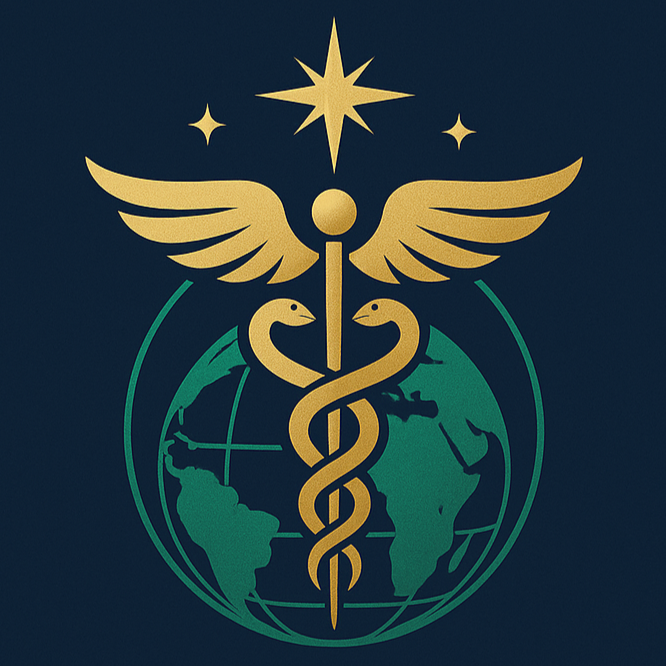Targeted Therapy 標靶治療
Targeted therapy is a treatment that precisely attacks specific genes, proteins, or signaling pathways in cancer cells. By blocking the signals that drive tumor growth, it suppresses cancer while sparing normal cells—resulting in higher effectiveness and fewer side effects.
Unlike traditional chemotherapy, targeted drugs selectively attack cancer cells and can be combined with other treatments (e.g., chemotherapy, immunotherapy) to boost overall efficacy.
Types of Targeted Drugs
Targeted agents are classified three ways:
-
By drug type (two main categories)
-
By mechanism of action (five categories)
-
By development generation (first, second, and third)
1. By Drug Type
a. Small-molecule inhibitors
-
How they work: Small enough to enter cells, they disrupt signaling proteins or enzyme activity inside cancer cells.
-
Administration: Usually oral pills.
-
Examples:
-
EGFR inhibitors (e.g., Iressa, Tarceva)
-
ALK inhibitors (e.g., Crizotinib, Alectinib)
-
BRAF inhibitors (e.g., Vemurafenib)
-
b. Monoclonal antibodies (mAbs)
-
How they work: Large molecules that bind targets on the cancer cell surface, blocking growth signals or delivering toxins directly to the tumor.
-
Administration: Intravenous infusion.
-
Examples:
-
HER2 inhibitors (e.g., Herceptin)
-
VEGF inhibitors (e.g., Avastin)
-
PD-1/PD-L1 immune checkpoint inhibitors (e.g., Keytruda, Opdivo)
-
2. By Mechanism of Action
1. Signal Transduction Inhibitors
Block overactive signals inside cancer cells caused by mutated genes.
-
EGFR inhibitors for lung cancer
-
ALK inhibitors for lung cancer
-
BRAF inhibitors for melanoma
2. Angiogenesis Inhibitors
Prevent tumors from growing new blood vessels, starving them of oxygen and nutrients.
-
VEGF inhibitors (e.g., Avastin) for colorectal and lung cancer
-
Sorafenib (Nexavar) for liver and kidney cancer
-
Sunitinib (Sutent) for kidney cancer, GIST
3. Apoptosis Inducers
Trigger programmed cell death in cancer cells that have learned to evade it.
-
BCL-2 inhibitors (e.g., Venclexta) for chronic lymphocytic leukemia (CLL)
4. Immunotherapy Agents
Unblock the immune system so it can recognize and destroy cancer cells.
-
PD-1/PD-L1 inhibitors (e.g., Keytruda, Opdivo) for lung cancer, melanoma
-
CTLA-4 inhibitors (e.g., Yervoy) for melanoma
5. Antibody–Drug Conjugates (ADCs)
Combine a monoclonal antibody with a toxin, delivering the poison directly into the cancer cell.
-
T-DM1 (Kadcyla) for HER2-positive breast cancer
-
Brentuximab vedotin (Adcetris) for Hodgkin lymphoma
3. By Generation (for EGFR and ALK Inhibitors)
a. 1st Generation (e.g., Iressa, Tarceva):- Target common EGFR mutations but develop resistance.
- More potent but have stronger side effects.
- Target resistant EGFR T790M mutations.
How Are Cancer Cells Identified for Targeted Therapy?
Before treatment, tests confirm that tumor cells express the specific targets needed for a drug to work. This "targeting" relies on:
Protein overexpressionSome cancers overproduce proteins like HER2. Herceptin binds HER2 and blocks its growth signals.
Driver mutations
Mutated genes, such as BRAF V600E, can be targeted by drugs like Zelboraf to halt melanoma growth.
Gene fusionsFusion genes (e.g., BCR-ABL in CML) create abnormal proteins that drugs like Gleevec can inhibit.
Why Genetic Testing Matters?
Genetic tests identify which patients have the mutations that targeted drugs can attack, ensuring the treatment is effective and avoiding unnecessary side effects.
-
Purpose:
-
Confirm eligibility (e.g., EGFR mutation for Iressa, HER2 for Herceptin)
-
Prevent ineffective therapy
-
Guide combination strategies (e.g., targeted plus immunotherapy)
-
Monitor resistance (e.g., EGFR T790M mutation)
-
-
Methods:
-
Single-gene tests for known mutations (EGFR, HER2)
-
Next-Generation Sequencing (NGS) to screen multiple genes at once
-
Who Can Receive Targeted Therapy?
A patient's tumor must carry a specific target. If no identifiable target exists, targeted drugs won't work. Some cancers also require non-surgical conditions to qualify.
Although targeted agents often work better and have fewer side effects than chemotherapy, they are not available for every cancer patient, and they can be costly. As a result, targeted therapy is usually part of a combined treatment plan, not the sole approach.
If you're diagnosed with cancer and considering targeted therapy, discuss with your doctor which options are appropriate for your specific tumor profile.

